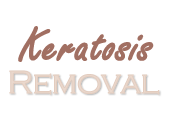The use of cryogens or cryotherapy, curettage, laser therapy, electrocautery or surgical excision all aid in treating keratoses – the first being the most popular keratosis removal method. Studies reported that it is the second-most common procedure next to surgical procedures such as skin excision and it can easily be performed in the doctor’s office.
Various bothersome skin lesions such as warts, actinic keratosis or seborrheic keratosis are frozen off from the body through the utilization of very low temperatures – the process termed as cryotherapy. Due to failed trials in removing deeper and thicker lesions, this regimen is recommended only for superficial or flat lesions.
So how does cryotherapy work? Cryotherapy constricts the blood vessels at the site of the injury or in the case of keratoses, at the lesions’ site. This blood vessel constriction, most commonly known to as vasoconstriction in medicine, results to a reduction in the blood flow to the site. Because of lesser blood supply, the cells cannot procure the nutrients that they normally get from the blood including oxygen. In the end, the cells then die – a process called necrosis.
Liquid nitrogen, carbon dioxide snow and DMEP or dimethyl ether and propane, are some of the substances utilized to yield extremely cold temperatures and which are termed as cryogens. But amongst the three, liquid nitrogen is the most commonly exercised cryogen by physicians primarily because of its low boiling point, making it a highly effective cryogen.
Using any tool that would prevent the doctor’s direct contact with liquid nitrogen such as a cotton-tipped applicator, a spraygun or a probe, the physician starts the process by directly applying the liquid nitrogen onto the client’s skin. Then, the heat from the skin instantly transfers to the liquid nitrogen making it evaporate quickly, usually within a minute or so. Thawing of the skin lesions then succeeds this short freezing time. This eventually results to leaking out of the cell’s contents which herald the beginning of the definite cell injury. To conclude the process, the client’s skin will show signs of inflammation – redness, swelling, pain and warmth – signaling the cells’ decompensation.
Cryotherapy, in general, is safe when administered properly. But like many other procedures, complications can and will arise. Such is the aftermath of prolonged freezing by the liquid nitrogen which shows as a whiter skin color of the area treated than the surrounding skin, commonly referred to as hypopigmentation.
Due to its dangerous effect on people exposed through direct contact, liquid nitrogen is still regarded highly dangerous despite not making it under the Resource Conservation and Recovery Act’s list of hazardous materials. Exposure to liquid nitrogen can be through inhalation or direct contact. Inhalation effects are not that toxic unless a significant amount of liquid nitrogen is spilled, thereby reducing oxygen levels prompting the need for respirators. In order to prevent accidental exposure to liquid nitrogen, strict adherence to safety protocols, particularly in its transportation, must be observed.
Liquid nitrogen can spatter into one’s eyes especially when transferring it to another container. Direct contact with the skin can also happen unexpectedly.
Therefore, for both the medical practitioners and the laypersons alike: practice utmost safety when handling liquid nitrogen. Always wear goggles, face shields or masks, gloves, aprons or other encapsulating suits when handling any objects with liquid nitrogen or liquid nitrogen itself. In cases of leaks, any person not wearing any protective gear must leave the area until cleaning is completed. And if liquid nitrogen ever comes in contact with the skin, and not during a cryotherapy, the frozen skin should be soaked in water that is 41-46 degrees Celsius in temperature before immediately consulting a doctor.

